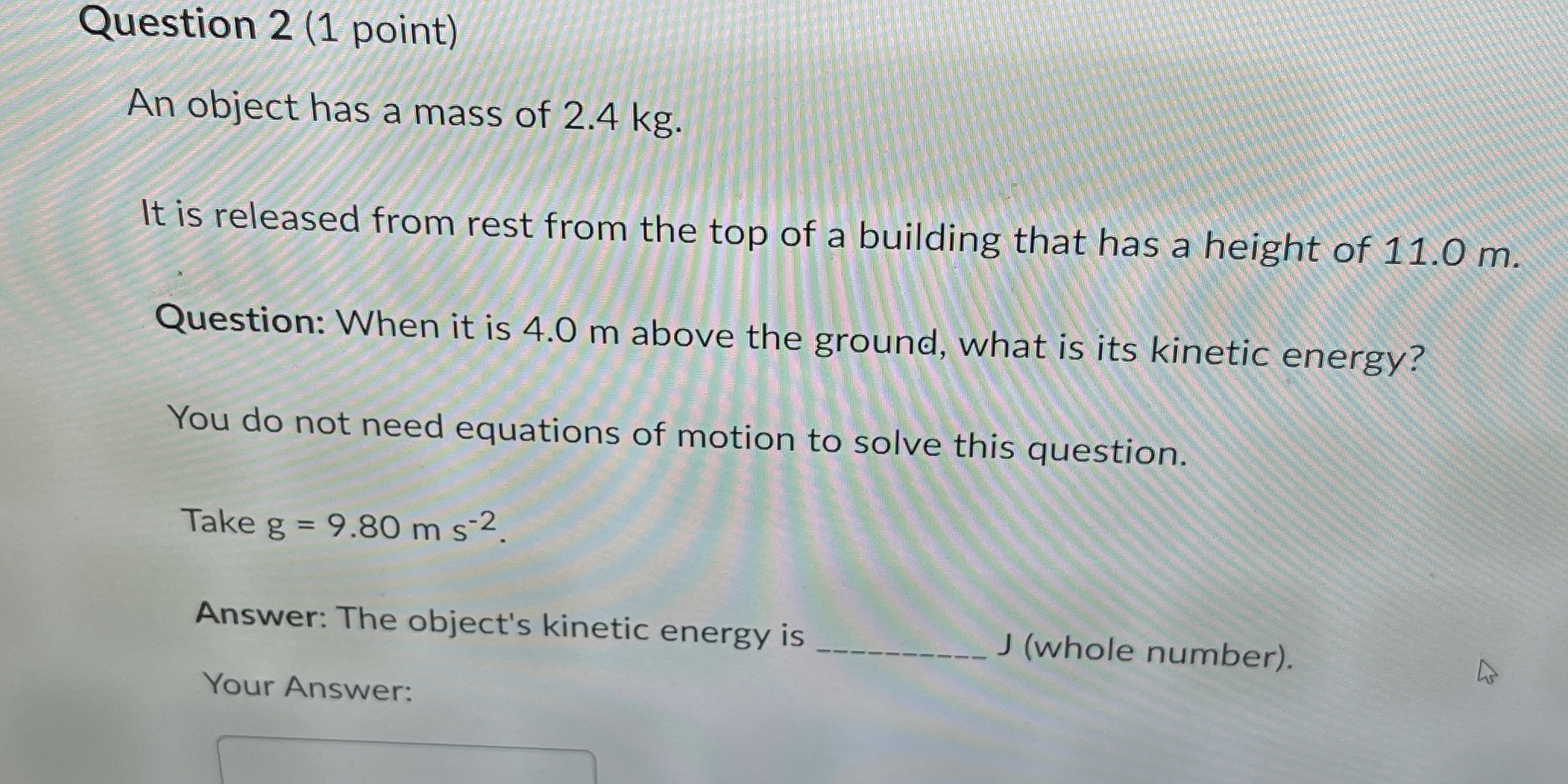When it is 4.0 m above the ground, what is its kinetic energy?

Understand the Problem
The question is asking for the kinetic energy of an object that has fallen to a height of 4.0 m above the ground from an initial height of 11.0 m. The mass of the object and the acceleration due to gravity are given, allowing for the calculation of the kinetic energy at that height.
Answer
The object's kinetic energy is $166 \, \text{J}$.
Answer for screen readers
The object's kinetic energy is $166.32 , \text{J}$, which rounds to $166 , \text{J}$.
Steps to Solve
-
Calculate the height fallen The object is released from an initial height of 11.0 m and is at a height of 4.0 m above the ground. The height fallen is: $$ h_{fallen} = 11.0 , \text{m} - 4.0 , \text{m} = 7.0 , \text{m} $$
-
Calculate the potential energy lost The potential energy lost as the object falls can be calculated using the formula: $$ PE_{lost} = m \cdot g \cdot h_{fallen} $$ Substituting the values, where $m = 2.4 , \text{kg}$ and $g = 9.80 , \text{m/s}^2$: $$ PE_{lost} = 2.4 , \text{kg} \cdot 9.80 , \text{m/s}^2 \cdot 7.0 , \text{m} $$
-
Calculate the kinetic energy The kinetic energy (KE) at that height is equal to the potential energy lost: $$ KE = PE_{lost} $$ Now, substituting the calculated value to find the kinetic energy.
The object's kinetic energy is $166.32 , \text{J}$, which rounds to $166 , \text{J}$.
More Information
The kinetic energy calculated demonstrates how potential energy is converted into kinetic energy as the object falls. This principle is a key concept in physics, showing conservation of energy in a system.
Tips
- Failing to account for the correct height fallen (not subtracting the final height from the initial).
- Confusing potential energy with kinetic energy; remember they are related but not the same.
AI-generated content may contain errors. Please verify critical information